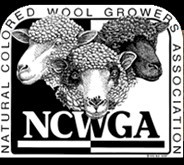Romney Sheep are a dual purpose breed, used for wool
and meat, that originated in the Romney Marshes of Kent England. They are one
of the world most successful sheep breeds.
They are large
framed and carry a heavy long woolled fleece. They have a broad white face,
sometimes with a small woolly top knot. Both sexes are hornless. Rams
average 250 lbs., ewes average 175-200 lbs. Their fleece on average their fleece
weighs 10-12lbs.
Romney Sheep are
very hardy and easy to maintain. Due to their swampy origin, they are
more resistant to foot rot and liver flukes than most breeds.
Whether shorn once or twice a year, the wool clip from a
purebred Romney flock is sought by commercial wool buyers and craftspeople. Its
broad range of acceptable spinning counts enables Romney wool to be used for
many products, ranging from sweaters to outer wear to carpets. For the
commercial producer, incorporation of the heavy-shearing white Romney can add
significantly to overall farm income.
The long, lustrous fleece, hanging in separate locks, also
makes a white or natural colored Romney fleece especially attractive to
hand spinners. The fleece is easily spun in the grease or after washing and
carding, and readily takes dye. The natural black, gray, silver, and brown
colors of the natural colored Romneys are frequently among the most sought
after fleeces at shows and sales. A handspinning-quality fleece may often sell
for three to ten times what a commercial buyer would pay for it.
History
Romney Sheep were
developed, in the nineteenth century, by English ranchers that took indigenous Romney
Marsh sheep and crossbred them with Leicester sheep. They provided the
foundation for the English woolen industry, which was the most important export
commodity in the Middle Ages. Their long, dense fleece was highly prized.
Romney sheep were exported internationally early in the 19th
Century when a shipment was sent to New Zealand. In 1856, Alfred Ludlum
established New Zealand’s first Romney Marsh stud in 1860 at Newry, in the Hutt
Valley. Ludlum's brother-in-law, Augustus Onslow Manby Gibbes, also bred Romney
around this time in Australia—at his famous sheep property, “Yarralumla”.
In 1904, William Riddell and Sons, of Monmouth Oregon USA,
imported the first Romneys to North America, where their popularity increased
rapidly. The American Romney Breeders Association was founded in 1912 by Joe
Wing, a world traveler and a great judge of sheep. At one time with the
University of California, he was an early secretary of the ARBA, and his
expertise was instrumental in the development of Romneys in America. The first
purebred natural colored Romneys, in America, were registered by the
Association in 1972 by Morris Culver of Curtin, Oregon. In the last three
decades, the popularity of Romneys has spread from the West Coast across the America.
Today the sun never sets on Romney sheep. They are distributed
throughout England, New Zealand, Australia, Patagonia, Canada, Brazil,
Portugal, Falkland Islands, and the United States.And in some countries, like New Zealand, they
have become predominant sheep breed.
Content Source: America Romney Breeds Association and the
Australian Romney Association, Inc.

